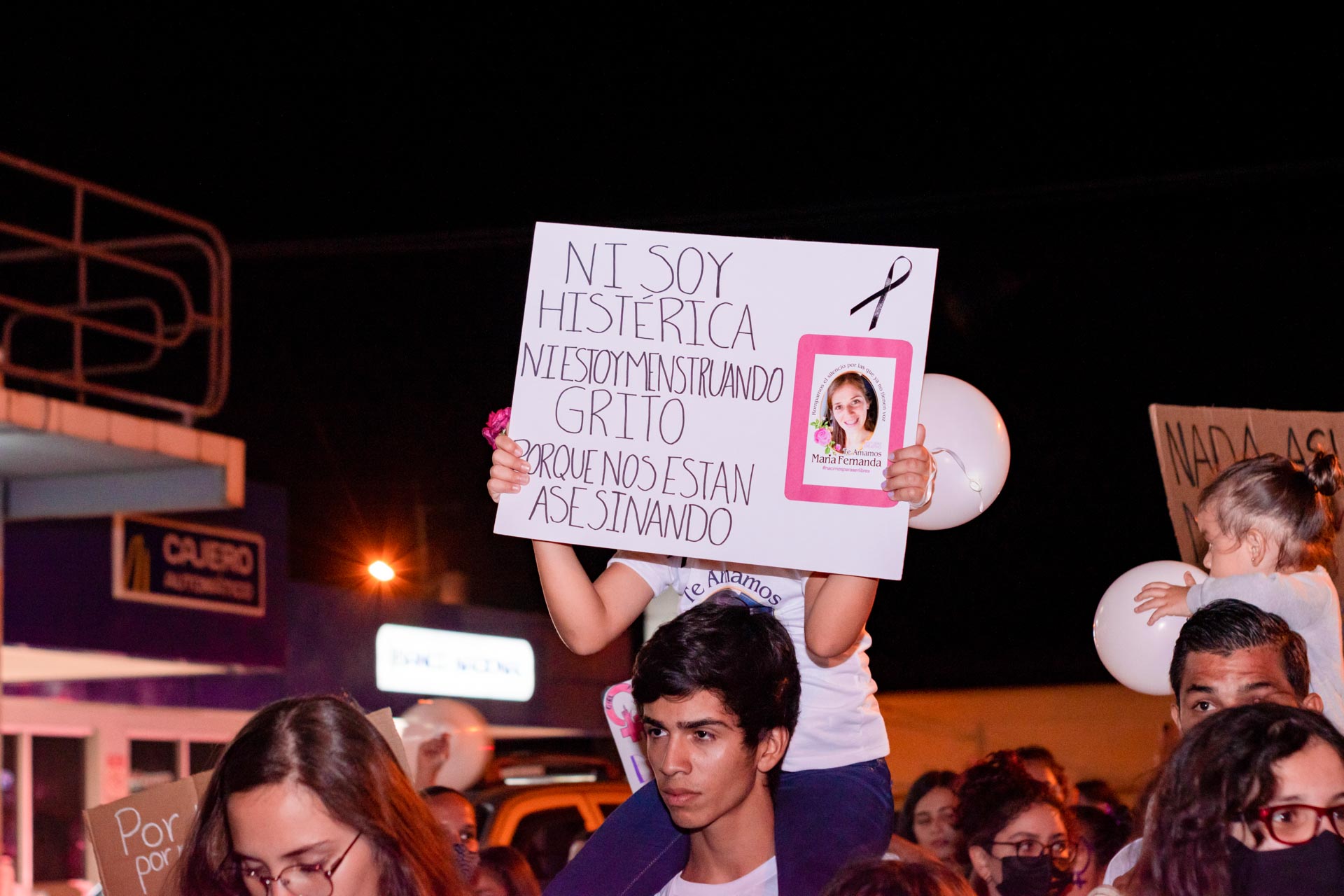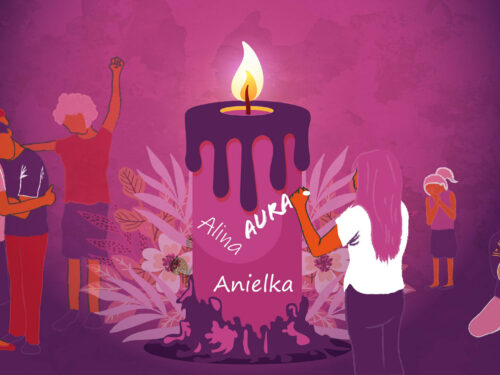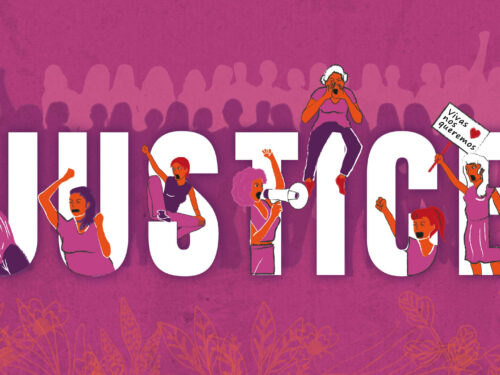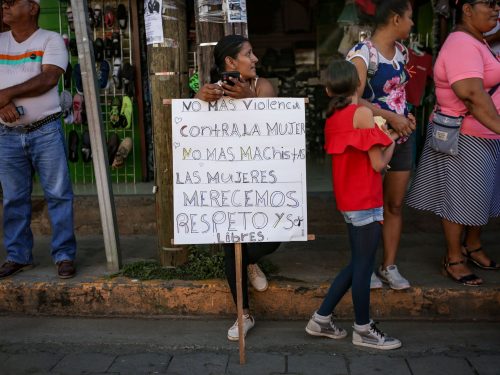
In less than two weeks, Guanacaste recorded three new violent deaths of women at the hands of men: Natalia Ester Pasos, 70, who was murdered in Liberia, and Luz Marina Whatts (42) and Anielka Silva (33), who were attacked in Santa Cruz.
They are in addition to two other women also murdered during January and February in Liberia: Rolsalbina Fuentes (67) and Alina Viales (25).
The main suspects in the crimes committed against Rosalbina, Alina and Anielka are on the run, the Judicial Investigation Agency (Spanish acronym: OIJ) confirmed to The Voice. The suspects in the cases of Luz Marina and Natalia were arrested.
With five cases in just the first quarter of the year, that’s equaling the number of violent deaths registered in Guanacaste in 2022.
It isn’t yet possible to speak of them being femicides officially because the Inter-Institutional Subcommittee for the Prevention of Femicides hasn’t yet qualified them as such. According to its coordinator, Marcela Arroyave, they will meet in the upcoming weeks to analyze the cases.
We hope that at the next meeting [in April], we’ll already be able to confirm some, but we can certainly show evidence of features that several of them are femicides,” Arroyave told The Voice.
The annual number of femicides that Guanacaste has recorded since 2017 has varied between 2 and 4. That is to say, if all of these deaths are classified as femicides, the province would already be exceeding the number from the last six years.
Since 2007, the country has recognized and punished femicides under the Law for the Penalization of Violence against Women. In 2021, the Legislative Assembly reformed legislation to recognize as femicides not only violent deaths that occur at the hands of spouses (marriage or common-law union), but also boyfriends, men they are living with, casual relationships, even if there are divorces, separations or breakups.
Cases are also considered femicides when the murderer has taken advantage of a bond of trust, friendship, authority or a blood relationship up to the third degree, regardless of whether or not they live under the same roof.
The penalty is 35 years in prison.
Activists Demand Action
Feminist groups from the province have spoken out against the acts and demand that institutional authorities take action to prevent and punish gender violence.
Ver esta publicación en Instagram
“We feel overwhelmed by the amount of violence that we have noticed this year and even more so when we realize that we’re just finishing March,” said Wendy Valverde, a member of the Tamarindo Collective.
“It’s quite alarming. And not only with femicides, which are the maximum manifestation of gender violence, but also in other types of aggressions such as rape and sexual abuse of women and adolescents in the community,” she added.
The most recent data provided by the Judiciary’s Observatory Against Gender Violence is from 2021. That year, Guanacaste reported a total of 775 sexual crimes, 8% of those that occurred in the entire country. As in the rest of Costa Rica, the most reported sexual attacks are those involving minors or people with disabilities.
The collective, together with the organization Cepia, is offering support to the families affected by the most recent deaths of Luz Marina Whatts (Tamarindo) and Anielka Silva (El Llano), confirmed Valverde and the coordinator of Cepia’s Prevention of Violence against Women Project, Esther Jiménez. Both of the women murdered in Santa Cruz were mothers of two minors.
The alleged killer of Luz Marina was arrested after the fact and ordered to spend four months in preventive detention.
Regarding the person responsible for the crime against Anielka, police units from the Public Force of Santa Cruz, the Municipal Police, the Border Police, OIJ, Air Surveillance and the Canine Unit are working on an operation to find him since he fled after murdering her. This was confirmed by the canton’s police chief, Michael Fernández, who was participating in an operation to arrest him this Wednesday morning.
The Cases in Liberia
Alina Viales, a young student at the National University, was found naked, with a blow to the head, in a vacant lot in Liberia. The other two elderly women, Rosalbina and Natalia (67 and 70 years old), were killed in residential houses.
Liberian activist Grethel Cerdas feels that communities must get involved.
There’s a phrase that’s repeated a lot, and that is that you don’t get involved in couple problems, and you have to get involved. Sometimes we hear fights in neighbors’ houses and we think, why call the police if they’re going to make up right now, but no,” she thinks.
“If, as neighbors, we come and report a case of aggression, this would decrease considerably,” she pointed out.
Arroyave, who also works at INAMU (the Women’s Institute), makes the same call to action.
“Let’s not normalize violence, even though we’ve heard it every day. If our neighbor is being a victim of violence, if she is being attacked, please call 911, because that aggression could end in a femicide,” she said.
DOWNLOAD THE PATH TO SAVING LIVES
Femicides in Recent Years
Between 2017 and 2022, Guanacaste recorded 16 femicides, according to statistics from the Judiciary’s Observatory of Gender Violence. Last year, the victims were María Fernanda Quesada (28 years old, Huacas resident), María de Lourdes López (45, Nosara) and Seilyn Cabezas (37, Tilarán).
The main suspects in the femicides of María Fernanda and María de Lourdes were arrested. Seilyn’s assailant committed suicide after killing her. The Voice is waiting for the Prosecutor’s Office to provide details from the files in the cases of María Fernanda and María de Lourdes.
The coordinator of the femicide prevention subcommittee specified that the institution is conducting an investigation to analyze the femicides of 2020.
We take the 28 femicides of 2020 and we go to each of the places where the femicides occurred to carry out an investigation with the family, with the community, with the institutions, to determine what was the critical path that the victim had before being murdered,” she described.
With the results, they’ll be able to understand what the weaknesses are in the prevention of these crimes.







Comments